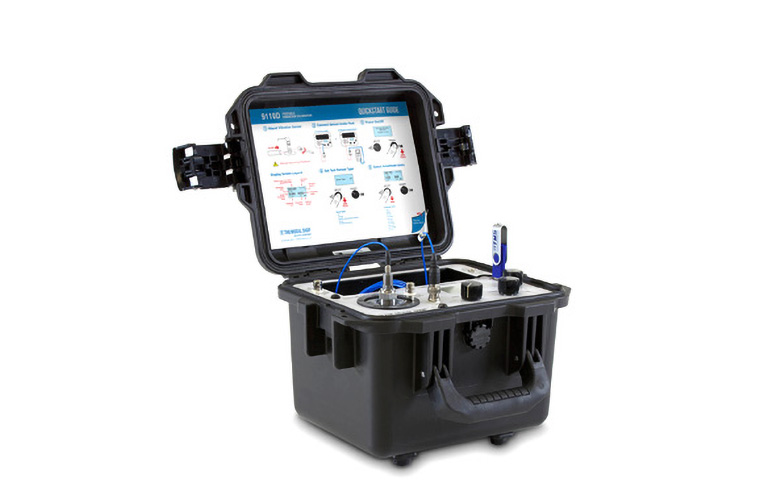Main Menu
- Home
- Product Finder
- Calibration Systems
- Calibration Services
- Digital Sensing
- Industrial Vibration Calibration
- Modal and Vibration Testing
- Non-Destructive Testing
- Sound & Vibration Rental Program
- Learn
- About Us
- Contact Us
 Aircraft manufacturers Bombardier and Dassault Aviation can rest assured that auxiliary gas turbine engines made by Safran Power Units do not exceed maximum vibration levels.
Aircraft manufacturers Bombardier and Dassault Aviation can rest assured that auxiliary gas turbine engines made by Safran Power Units do not exceed maximum vibration levels.
“Before we run an engine, we do end-to-end checks to ensure all of our instrumentation is working properly,” says Safran Test Engineer Pedro Montenegro. “We use The Modal Shop Variable Frequency Shaker to ensure that our accelerometers are all working properly at different frequencies, which is very important to us.”
As an ISO 9001 company located in San Diego, California, Safran must remain within strict contractual requirements for maximum vibration levels at critical frequencies for each engine. The Model 9100D NIST-traceable Portable Vibration Calibrator has accuracy that meets A2LA Accreditation standards. Therefore, using the 9100D to test the vibration data acquisition system before each test ensures both Safran and their customers can have confidence in the final report.
“Every auxiliary power unit has to have the acceptance test procedure. There is a requirement that it does not exceed certain vibration limits,” said Montenegro. “That is part of the pass/fail criteria for us, proving that this engine is worthy of being shipped out to the customer. That report is included when the engine gets shipped out.”
Typically, Safran uses smaller vibration sensors that can be wax mounted to The Modal Shop’s shaker, although some sensors are stud mounted. Each sensor is tested at multiple frequencies with first engine order (typical running speed) being most critical. “For us, first engine order is very important, and we can tune the shaker in to first engine order,” said Montenegro. “The different engines have different first engine order frequencies, so we can tune the shaker to that critical frequency and make sure we are reading properly where we care about the data the most.”
Fortunately for the Safran team, their test cell equipment is fairly new. The engineers have not had to troubleshoot situations where recorded vibration levels were significantly different than the known levels produced by the shaker. Montenegro first began using the shaker at a previous job with older equipment and sensors.
“That was one of the things you would use the shaker for mostly, troubleshooting,” said Montenegro. “The measurement might be fine at 500 Hz, but when you moved to 800 Hz it might be off. That’s when you would go in and troubleshoot to figure if we have a bad accelerometer that needed to be recalibrated. So that’s the big advantage of having the variable frequency over just having a 1g shaker with a fixed frequency and amplitude.”
Montenegro’s team has confidence in The Modal Shop's calibrator, as it is the only Portable Vibration Calibrator that is supplied with an accurate calibration certificate produced by test procedures certified by a third party. The calibration of The Modal Shop’s Portable Vibration Calibrator has been accredited by the American Association of Laboratory Accreditation (A2LA).
Safran technicians find the shaker convenient to use, thanks in part to closed loop control and a very stable display. “It is not something that an engineer has to go out and use,” Montenegro said. “We trust our mechanics to go out there and use it. They might not necessarily be vibration savvy, but the shaker is easy to use. I’ve had nothing but positive reviews from everyone that has used it. We love the fact that you can change amplitudes so simply and frequencies so simply. You don’t have to have it plugged in. You can move it around. We have two test cells, so it would be a hassle to have to take it out and plug it in somewhere.”
The Modal Shop’s Portable Vibration Calibrator has allowed Safran to have the utmost confidence in their aircraft engine testing process, thereby ensuring the engines they produce meet with the rigorous requirements of their customers.